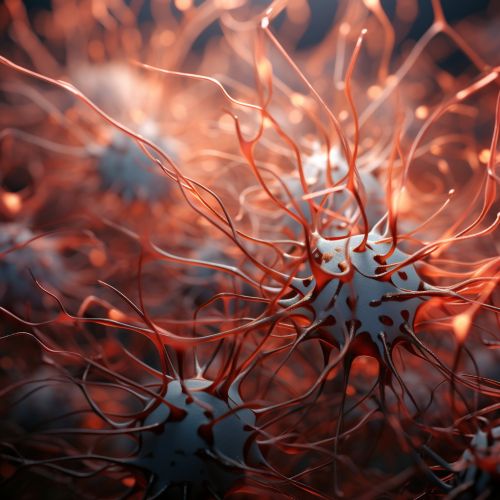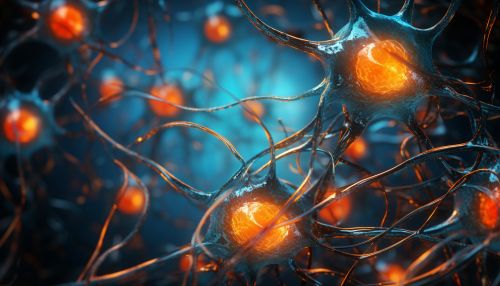Motor Neurons
Overview
Motor neurons are a type of neuron that transmit signals from the central nervous system to effectors such as muscles or glands. They are a key component of the motor system, which is responsible for the control of voluntary movements and the maintenance of posture and balance.


Structure
Motor neurons are characterized by a large cell body, a long axon, and multiple short dendrites. The cell body contains the nucleus and other organelles, and is the site of synthesis for proteins and other molecules. The axon is a long projection that carries electrical signals away from the cell body towards the target effector. The dendrites are short, branched extensions that receive signals from other neurons.
Cell Body
The cell body, or soma, of a motor neuron is typically large and contains a centrally located nucleus. The cytoplasm of the cell body is filled with organelles such as mitochondria, endoplasmic reticulum, and Golgi apparatus, which are involved in the synthesis and transport of proteins and other molecules.
Axon
The axon of a motor neuron is a long, thin projection that extends from the cell body and carries electrical signals, or action potentials, away from the cell body. The axon is insulated by a myelin sheath, which is formed by Schwann cells in the peripheral nervous system and by oligodendrocytes in the central nervous system. The myelin sheath serves to speed up the conduction of action potentials along the axon.
Dendrites
The dendrites of a motor neuron are short, branched extensions that extend from the cell body. They receive signals from other neurons and convey these signals to the cell body. The dendrites are covered with numerous synapses, which are the sites of communication between neurons.
Classification
Motor neurons can be classified into two main types: upper motor neurons and lower motor neurons.
Upper Motor Neurons
Upper motor neurons originate in the motor region of the cerebral cortex or the brainstem and carry signals down to the spinal cord. They do not directly innervate muscles, but instead synapse with lower motor neurons. Damage to upper motor neurons can result in spastic paralysis, a condition characterized by increased muscle tone and reflexes.
Lower Motor Neurons
Lower motor neurons originate in the spinal cord or brainstem and directly innervate muscles. They receive signals from upper motor neurons and convey these signals to the muscles, causing them to contract. Damage to lower motor neurons can result in flaccid paralysis, a condition characterized by decreased muscle tone and reflexes.
Function
Motor neurons play a crucial role in the control of voluntary movements and the maintenance of posture and balance. They receive signals from the brain and spinal cord and transmit these signals to the muscles, causing them to contract. The strength and timing of muscle contractions are controlled by the frequency and pattern of action potentials in motor neurons.
Disorders
Motor neurons can be affected by a number of disorders, including amyotrophic lateral sclerosis (ALS), spinal muscular atrophy (SMA), and polio. These disorders are characterized by the degeneration and death of motor neurons, leading to muscle weakness and paralysis.
